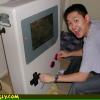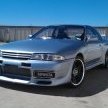Would A Twin Turbo Parallel Setup Work On An Rb?
Announcements
-
Similar Content
-
Latest Posts
-
I live in Thangool I cannot buy E85 fuel there or Biloela not many servo's sell it Rockhampton the Ampol in Gracemere won't even sell 98 , it's hard to own a high performance car in CQ and NQ .
-
By soviet_merlin · Posted
Sounds like a good excuse for a trip to Australia! But yeah, trying it out is probably the best way to go about it. Please report back what you find. -
Well as I will have both S1 and S2 front parts i will see what works best out of the two. Im not fussed if i need to drill extra holes, and im a big fan of Nutserts/rivet nuts and a nice painted dome head bolt as a way to hold stuff in place where plastic clips have broken and are hard to source new ones
-
Yeah truthfully it seems like the headlight supports for the ALTIA and S2 should be the same, but they aren't. I can only guess that the grill area of the Altia bar is different to the grill area of the S2 bar. Either that or it's due to the S1 bar having an angle up to the center bar that the Altia doesn't, or something. That said, I recently bought an Altia bar myself, and I fit it over the S1 brackets and thought "Yes, this will all work fine" so even as I doubt my own words as I post, I also daresay you'll be okay.
-
Me too. Apparently the new version of Invision will allow some customisation so look forward to a 'Love' reaction and a new 'Like' icon.
-







Recommended Posts
Create an account or sign in to comment
You need to be a member in order to leave a comment
Create an account
Sign up for a new account in our community. It's easy!
Register a new accountSign in
Already have an account? Sign in here.
Sign In Now